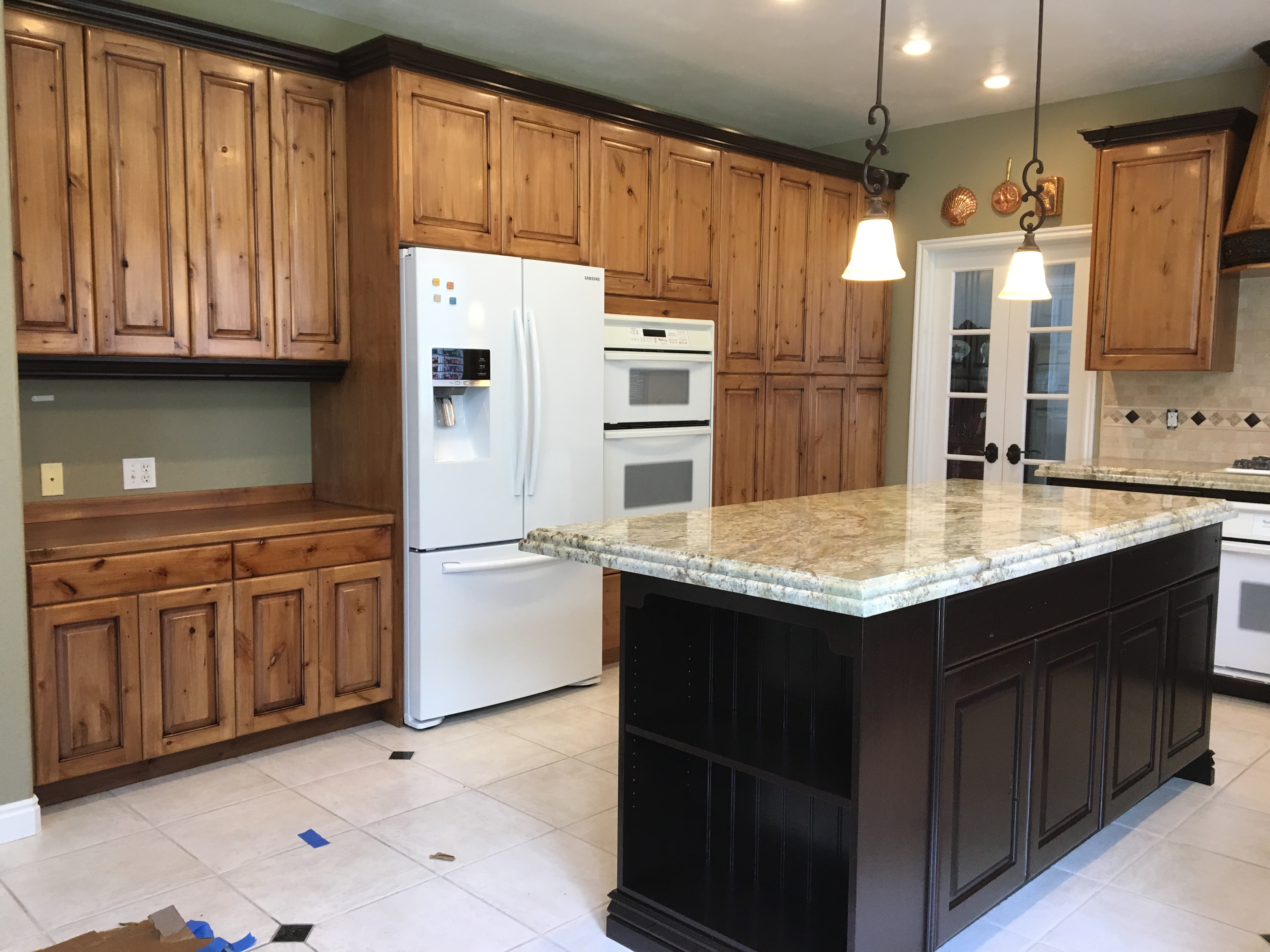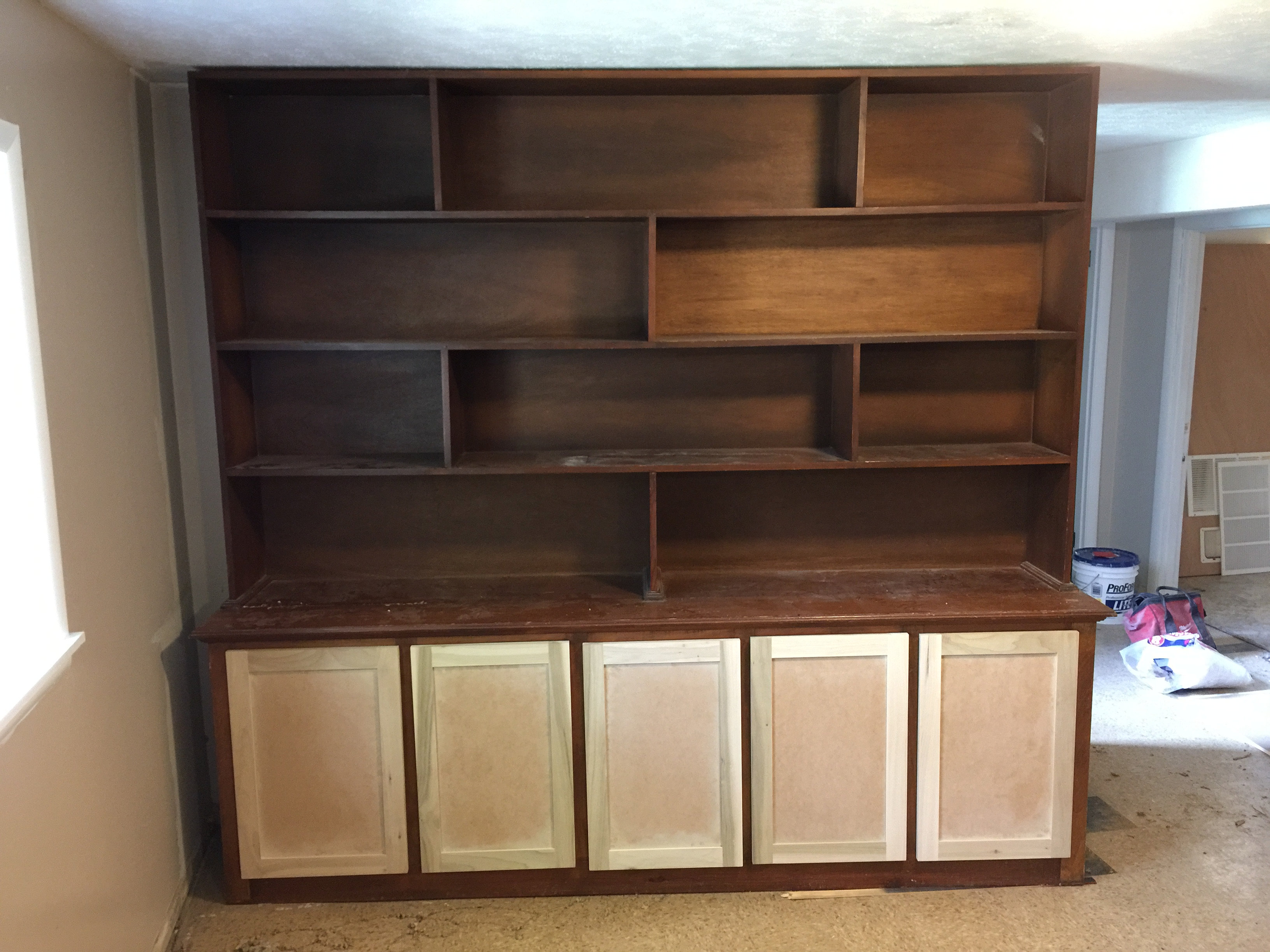Painting Techniques for Old Pine Kitchen Cabinets

Painting old pine kitchen cabinets requires careful preparation and execution to achieve a durable and aesthetically pleasing finish. The unique characteristics of pine, such as its softness and tendency to absorb paint unevenly, necessitate a thoughtful approach to each stage of the process. Success hinges on proper surface preparation, the selection of appropriate paints and primers, and the skillful application of paint.
Paint Preparation Methods for Old Pine Cabinets
Three primary methods exist for preparing old pine cabinets for painting: de-glossing, sanding, and a combination of both. Each offers distinct advantages and disadvantages.
- De-glossing: This involves using a liquid deglosser to remove the existing sheen from the cabinet surfaces. This improves paint adhesion. Pros: Faster than sanding, less dust. Cons: May not remove all imperfections, requires thorough cleaning afterward.
- Sanding: This method involves abrading the surfaces with sandpaper to create a rougher texture that promotes better paint adhesion. Pros: Effectively removes imperfections and old finishes. Cons: Time-consuming, dusty, requires appropriate safety equipment (mask and eye protection).
- Combination Method: This combines deglossing with sanding, using the deglosser to soften the existing finish and then sanding to smooth the surface and further improve adhesion. Pros: Offers the benefits of both methods, providing a thorough preparation. Cons: More time-consuming than deglossing alone.
Sanding Techniques and Their Effects
The choice of sanding technique significantly impacts the final finish.
| Sanding Technique | Grit | Effect on Finish | Pros/Cons |
|---|---|---|---|
| Light Sanding | 180-220 grit | Smooths minor imperfections, prepares for paint | Quick, minimal surface removal; may not be sufficient for heavily damaged surfaces |
| Medium Sanding | 120-150 grit | Removes more significant imperfections, improves paint adhesion | Effective for moderate surface damage; more time-consuming than light sanding |
| Heavy Sanding | 80-100 grit | Removes heavy imperfections, old paint, or significant damage | Aggressive, removes a lot of material; requires more effort and may require multiple grits |
Step-by-Step Guide for Painting Old Pine Cabinets
Thorough preparation is crucial for a professional-looking finish. Follow these steps:
- Clean the cabinets thoroughly with a degreaser to remove grease and grime.
- Repair any damage (chips, cracks) using wood filler and allow it to dry completely.
- Sand the cabinets using the appropriate grit, following the sanding techniques Artikeld above.
- Apply a high-quality primer designed for adhesion to wood. Allow it to dry completely according to manufacturer instructions. A second coat of primer may be beneficial for better coverage, especially on darker wood.
- Apply two coats of paint, allowing each coat to dry completely before applying the next. Light sanding between coats with fine-grit sandpaper (220+) may improve the finish, but is optional.
Paint Types for Old Pine Cabinets, Painting old pine kitchen cabinets
The choice between oil-based and water-based paints depends on several factors.
- Oil-Based Paints: Offer superior durability and a harder, more resistant finish. However, they require mineral spirits for cleanup, have a strong odor, and take longer to dry.
- Water-Based Paints (Latex): Easier cleanup with soap and water, low odor, and faster drying time. They are less durable than oil-based paints, but modern formulations offer excellent results with proper preparation.
Recommended Paint Brands: Benjamin Moore, Sherwin-Williams, Farrow & Ball (note that availability may vary by region).
Paint Application Techniques with Different Brush Types
Different brush types offer unique advantages and disadvantages.
- Angled Brush: Excellent for cutting in around edges and details, providing precise control. However, it can leave visible brush strokes if not applied carefully.
- Flat Brush: Ideal for covering large, flat surfaces quickly and efficiently. It may leave visible brush strokes if not used with long, smooth strokes.
- Foam Roller: Provides a smooth, even finish, especially on large surfaces. However, it can be less precise around edges and details and may not be suitable for all paint types.
Dealing with Specific Issues in Old Pine Cabinets
Painting old pine cabinets presents unique challenges due to the wood’s inherent characteristics and the potential for pre-existing damage. Successfully navigating these issues requires careful preparation and the application of appropriate techniques. Ignoring these problems can lead to an unsatisfactory finish, requiring additional work and potentially more expense.
Wood Grain Showing Through
The porous nature of pine can allow the underlying wood grain to show through even multiple coats of paint. This is particularly problematic with lighter paint colors. To mitigate this, the application of a high-quality primer specifically designed for wood is crucial. A shellac-based primer is excellent for sealing the wood and preventing bleed-through. Applying two thin coats of primer, allowing each to dry completely before the next application, is recommended. Sanding lightly between coats with fine-grit sandpaper will create a smoother surface for the paint.
Uneven Surfaces and Peeling Paint
Old pine cabinets often exhibit uneven surfaces due to age, previous repairs, or simply the natural variations in the wood. Peeling paint is another common issue, requiring removal before repainting. Uneven surfaces should be addressed using wood filler for significant imperfections and sanding for minor inconsistencies. Peeling paint must be completely removed using a paint scraper, heat gun, or chemical paint remover, taking care to follow the manufacturer’s safety instructions. Always wear appropriate personal protective equipment (PPE), including gloves, eye protection, and a respirator when using chemical strippers.
Repairing Cabinet Damage
Scratches, dents, and chips are common on older cabinets. Wood filler is an effective solution for repairing these imperfections. Choose a filler that closely matches the color of the wood. Apply the filler slightly overfilling the damaged area, allowing it to dry completely according to the manufacturer’s instructions. Once dry, sand the filler smooth using progressively finer grits of sandpaper, starting with a coarser grit (e.g., 80-grit) and finishing with a fine grit (e.g., 220-grit). This ensures a seamless transition between the filler and the surrounding wood.
Addressing Water Damage
Water damage can significantly weaken the wood and compromise the paint’s adhesion. The extent of the damage dictates the repair method. Minor water damage, characterized by superficial discoloration or slight swelling, might only require thorough drying and sanding before priming and painting. More severe damage, involving significant warping or rot, requires more extensive repairs, potentially involving wood replacement.
| Method | Description |
|---|---|
| Drying and Sanding | For minor water damage, allow the affected area to dry completely. Then, sand the affected area smooth, removing any discolored or softened wood. Apply a wood hardener if necessary to strengthen the weakened wood. |
| Wood Replacement | For significant damage, the affected section of the cabinet may need to be replaced. This involves carefully removing the damaged area and fitting a new piece of wood, ensuring a tight and secure fit. |
| Epoxy Resin Repair | For severe rot or damage, epoxy resin can be used to fill and strengthen the affected area. Epoxy resin is a strong adhesive and filler that can penetrate and solidify damaged wood. |
Removing Old Varnish or Paint
Before repainting, any existing varnish or paint must be completely removed. This ensures proper adhesion of the new paint. Several methods exist, each with its advantages and disadvantages. Chemical paint removers are effective but require careful handling due to their toxicity. Always work in a well-ventilated area and wear appropriate PPE. Apply the remover according to the manufacturer’s instructions, allowing it to soften the old finish before scraping it away with a putty knife or scraper. Mechanical removal using sanding or scraping is a more labor-intensive but safer alternative. Electric sanders can speed up the process, but care must be taken to avoid damaging the underlying wood. Heat guns can soften the finish, making it easier to remove, but this method requires caution to prevent burning or scorching the wood. After removing the old finish, thorough cleaning with a solvent or mineral spirits is essential to remove any residue before priming and painting.
Finishing Touches and Cabinet Hardware: Painting Old Pine Kitchen Cabinets

Transforming old pine kitchen cabinets from drab to fab involves more than just paint; the finishing touches and hardware choices significantly impact the final aesthetic. Careful consideration of these details elevates the project from a simple repaint to a truly customized and stunning kitchen upgrade. This section will explore various techniques to enhance your painted cabinets and guide you through the selection and installation of new hardware.
Finishing Techniques for Painted Pine Cabinets
The choice of finishing technique depends heavily on the desired look and feel. A simple wax finish provides a subtle sheen, while distressing creates a more rustic, antique appearance. Glazing adds depth and dimension, enhancing the visual interest of the cabinets. Each technique requires a different approach and offers a unique outcome.
- Waxing: Waxing provides a protective layer and a soft, subtle sheen. Apply a thin coat of paste wax using a soft cloth, working in the direction of the wood grain. Buff to a high shine with a clean cloth. This method is ideal for a clean, simple finish that emphasizes the paint color.
- Distressing: Distressing creates a worn, aged look. After the paint is dry, use sandpaper (various grits depending on the desired level of wear) to gently sand away paint in areas that would naturally show wear, such as edges and corners. Use a dry brush technique with a darker paint to accentuate the distressing.
- Glazing: Glazing adds depth and richness to the paint color. Apply a translucent glaze over the dry paint, wiping away excess glaze with a rag to reveal highlights and create a shaded effect. Experiment with glaze colors to complement your paint choice; a darker glaze will enhance shadows, while a lighter glaze will create a more subtle effect.
Choosing and Installing New Cabinet Hardware
New hardware can completely transform the look of your cabinets. Careful measurement and selection are key to achieving a polished result. Consider the style of your kitchen and choose hardware that complements the overall design. Different hardware types offer varying levels of functionality and aesthetic appeal.
- Measuring for Hardware: Before purchasing hardware, accurately measure the existing screw holes or the distance between the centers of existing knobs/pulls. This ensures proper alignment and a professional finish. Also consider the size of the drawers and doors; oversized hardware can overwhelm smaller pieces, while undersized hardware can appear lost.
- Installation Methods: Most cabinet hardware is installed using screws. For knobs, simply screw them into the predrilled holes. Pulls often require two screws, one on each side of the pull. Hinges typically require careful alignment and may involve removing existing hinges before installing new ones. Always refer to the manufacturer’s instructions for specific installation guidance.
- Types of Hardware: The options are vast, ranging from simple knobs to elaborate pulls. Consider the style (modern, traditional, rustic), material (metal, ceramic, wood), and finish (polished nickel, brushed brass, oil-rubbed bronze) when making your selection. The hardware should complement the paint color and overall style of the kitchen.
Creating a Custom Painted Finish
A two-tone or distressed finish adds personality and visual interest. These techniques require careful planning and execution to achieve a professional-looking result.
- Two-Tone Finish: Choose two complementary paint colors. Paint the cabinet frames with one color and the cabinet doors with another. Ensure both colors are compatible and create a visually appealing contrast. This approach is particularly effective for creating a modern or farmhouse style.
- Distressed Finish (Detailed): Begin by painting the cabinets with your base coat. Once completely dry, use a slightly darker paint to create depth. Apply this darker paint with a dry brush technique to areas that would naturally show wear, such as edges and corners. This technique creates a layered effect that adds character and authenticity. Then, lightly sand the edges and raised areas to expose the lighter base coat, further enhancing the distressed look. Finally, apply a clear wax or sealant to protect the finish.

